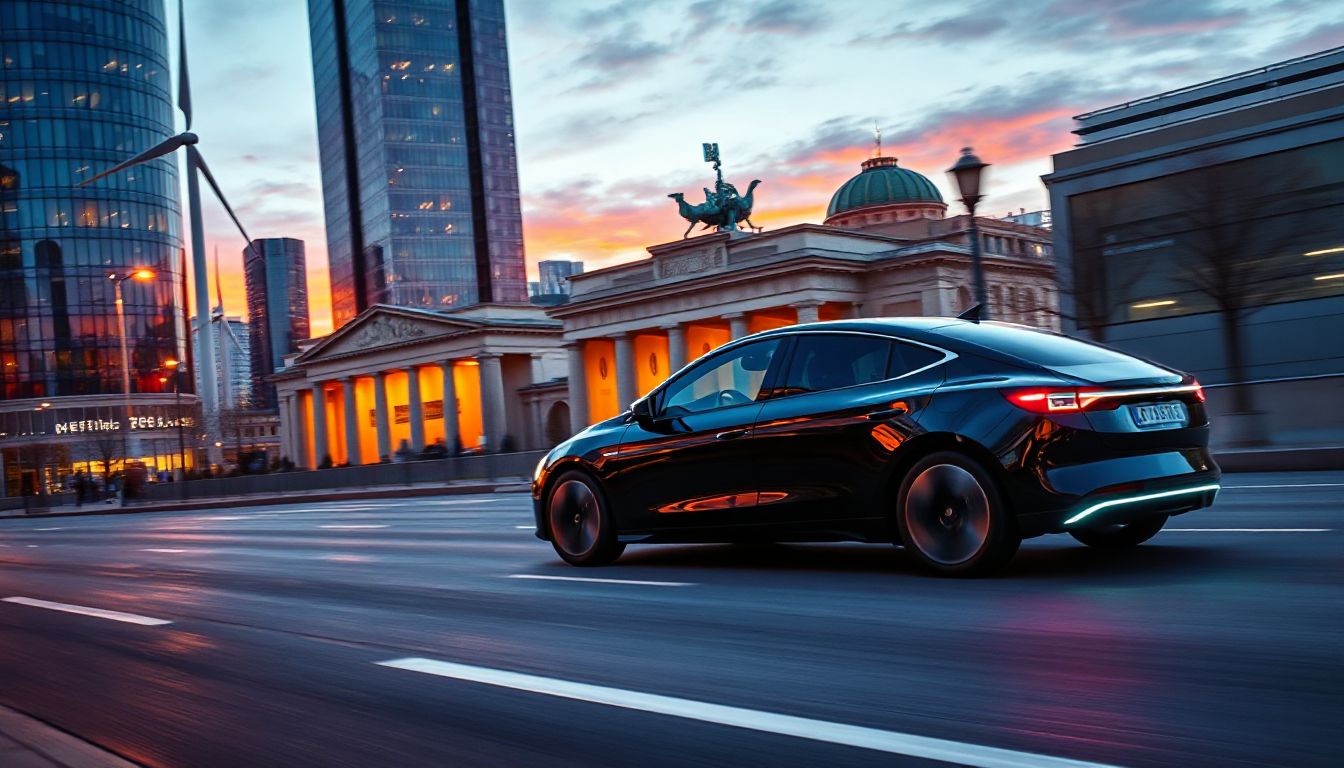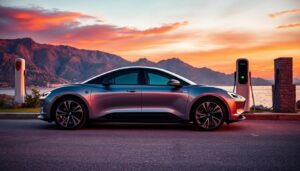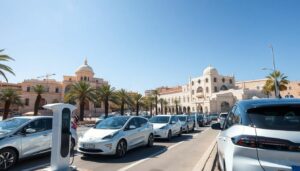Introduction
Germany is leading Europe in electric vehicle (EV) sales. As more drivers switch to EVs, knowing how long it takes to charge becomes essential. Whether you’re a current owner or thinking about buying one, understanding charging times and infrastructure can save lots of headaches.
Germany’s government pushes for more electric cars with incentives and laws. These policies boost EV sales and encourage building charging stations everywhere—from cities to countryside. For drivers, easy access to charging spots means convenience and less range anxiety. Knowing where and how fast to charge makes the switch smoother. The German grid and new tech also help power up EVs faster and greener.
The Evolution of Electric Vehicle Market in Germany
Historical Development and Market Growth
Germany’s EV story started back in the early 2010s. Sales were tiny compared to traditional cars. But as governments rolled out incentives, the market picked up speed. In 2020, EV sales tripled from the previous year, hitting over 470,000 cars registered.
By 2023, electric vehicles made up over 15% of all new car sales in Germany. Major milestones include the launch of the ID.3 by Volkswagen and BMW’s i3. Rapid growth shows Germans quickly embraced electric power, with more models and options becoming available.
Current Market Landscape
Today, the most popular EV models in Germany include the Volkswagen ID.3, VW ID.4, BMW i4, and Mercedes-Benz EQC. These cars are trusted for their range and affordability. Big car makers like Volkswagen, BMW, and Mercedes have expanded their EV lineup, pushing Germany’s market forward.
Future Projections
Germany aims for nearly 70% of all new cars to be EVs by 2030. Experts predict EV sales could reach 3 million vehicles in the next seven years. The government’s target is to replace combustion engines with cleaner electric tech, helping Germany reach climate goals and lead in green transportation.
Types of Electric Vehicle Charging Stations in Germany
Level 1 Charging
This is the slowest way to charge. It uses a standard household socket, adding about 3–5 miles of range per hour. You mostly see Level 1 outside homes or workplaces. Its simplicity is a plus, but it’s not good for quick trips or urgent needs.
Level 2 Charging
Level 2 stations are everywhere—homes, shopping centers, public parking lots. They deliver more power, adding 20–30 miles of range per hour. This is the most common public charger, perfect for overnight or midday top-ups. They’re faster and more convenient than Level 1.
DC Fast Charging (Level 3)
Fast chargers cut charging time significantly. They can power up a battery to 80% in just 30–45 minutes. Major brands like Ionity and EnBW operate these stations around Germany, especially along highways. They’re essential for long trips and quick stops.
Ultra-fast Charging and Upcoming Technologies
New tech is pushing beyond current limits. Ultra-fast chargers could soon deliver hundreds of miles of charge in 10–15 minutes. As these stations roll out, EV drivers will enjoy even shorter breaks on busy routes. This tech might change how Germans plan long-distance trips.
Charging Times for Electric Vehicles in Germany
Average Charging Duration by Charger Type
- Level 1: 8–12 hours for a full charge
- Level 2: 4–8 hours, depending on charger power
- DC Fast Charging: 30–45 minutes to 80%
Charging speed depends on battery size and charger wattage. Larger batteries take longer, but fast chargers keep times short, making trips easier.
Real-World Examples and Data
A VW ID.3 with a 58 kWh battery typically takes about 6 hours on a Level 2 station. Going fast, it reaches 80% in about 30 minutes at a DC fast charger. The BMW i3, with a smaller battery, charges faster at home or at public stations, taking 4 hours on Level 2 or about 40 minutes at fast chargers.
In German cities, charging times vary. Major hubs like Berlin or Munich often have quick chargers, so waiting times are usually under 45 minutes. Rural areas may have slower or fewer fast-charging stations.
Comparing Domestic and Commercial Charging Times
Charging at home is slower but more cost-effective. Public stations with fast chargers offer quick boosts but sometimes cost more. The density of stations makes a big difference—cities have more options, reducing waiting time, unlike remote areas where chargers may be few and farther apart.
Germany’s Charging Infrastructure and Grid Integration
Public Charging Network Development
Germany invests heavily in expanding its charging network. Urban areas like Berlin and Frankfurt are densely covered, with hundreds of fast chargers. Rural zones are catching up, thanks to government grants and private investments like Tesla Superchargers and the Ionity network. This growth makes charging more accessible everywhere.
Home Charging Solutions
Many Germans install home chargers, often called wallboxes. These units allow overnight charging, saving time and money. Having a personal charger is especially useful for people with daily routines that require early or late nights.
Grid Compatibility and Sustainability
Germany emphasizes renewable energy. Solar, wind, and hydropower support clean charging options. Smart grid tech helps balance energy load, so EV charging doesn’t strain the system or bump up power costs. Integration of renewable sources means charging with green energy becomes easier and more practical.
Tips for Efficient Electric Vehicle Charging in Germany
Planning Your Routes and Charging Stops
Use apps like Chargemap or PlugShare to find nearby stations. Plan long trips around fast charger locations. Checking station availability before starting helps avoid delays, especially during busy travel times.
Optimizing Charging Durations
Charge just enough to reach the next station or your destination. Avoid keeping batteries at 100% all the time, as it can reduce lifespan. For long journeys, fast charging is efficient; for daily use, regular top-ups work best.
Staying Updated with Infrastructure Developments
Follow local EV communities and government programs. New stations pop up regularly, making travel even easier. Staying informed helps you plan smarter and avoid unexpected stops.
Conclusion
Germany’s EV market is growing fast, supported by better infrastructure, smarter grid use, and innovative tech. Charging times are getting shorter, especially with the expansion of fast chargers along major routes. For drivers, knowing how long they’ll wait while charging helps plan better trips and daily routines.
As Germany pushes toward a greener future, electric cars and their charging networks will only get better. Whether you’re charging at home or on the road, understanding these essentials ensures you get the most out of your EV. For current and future owners, staying updated and planning ahead will make the electric journey smoother and more convenient.




